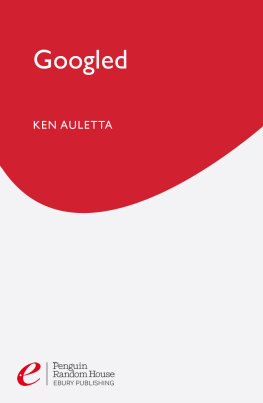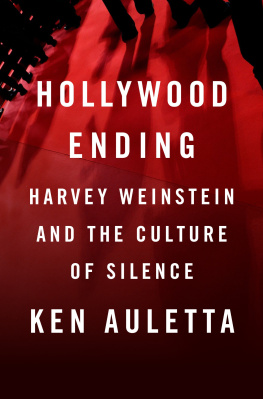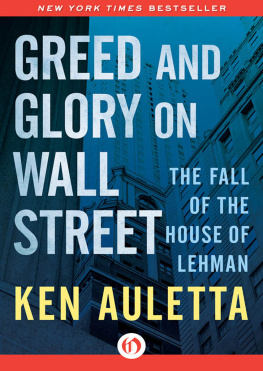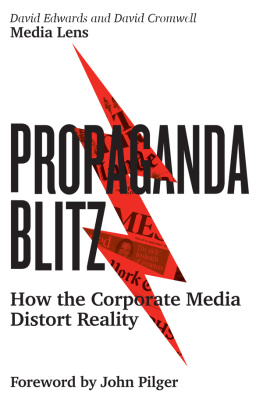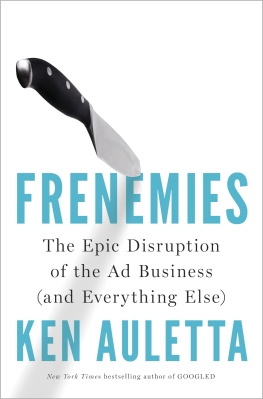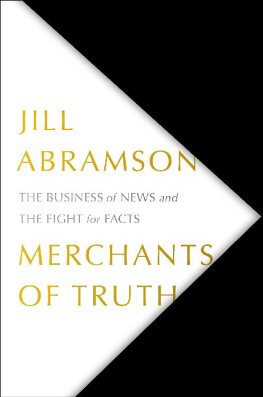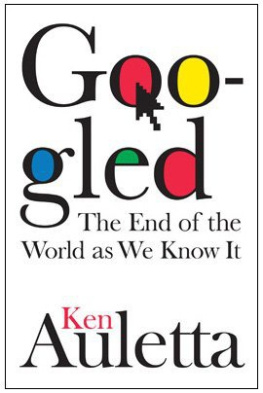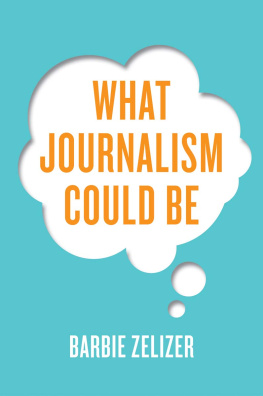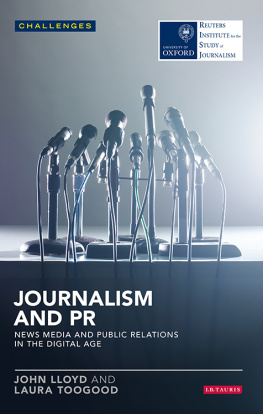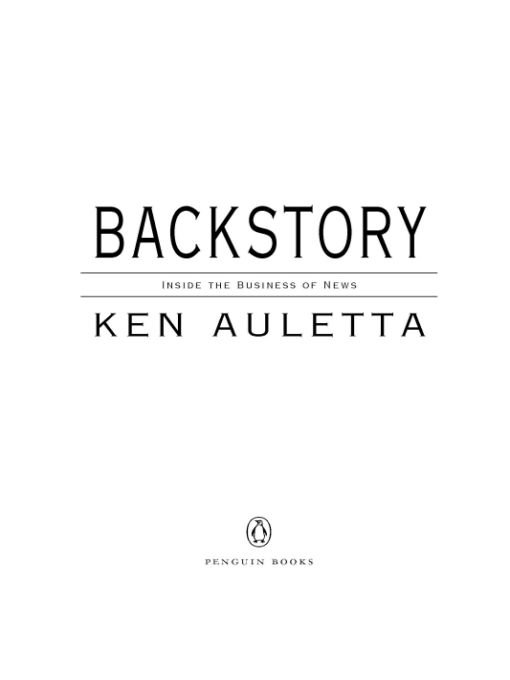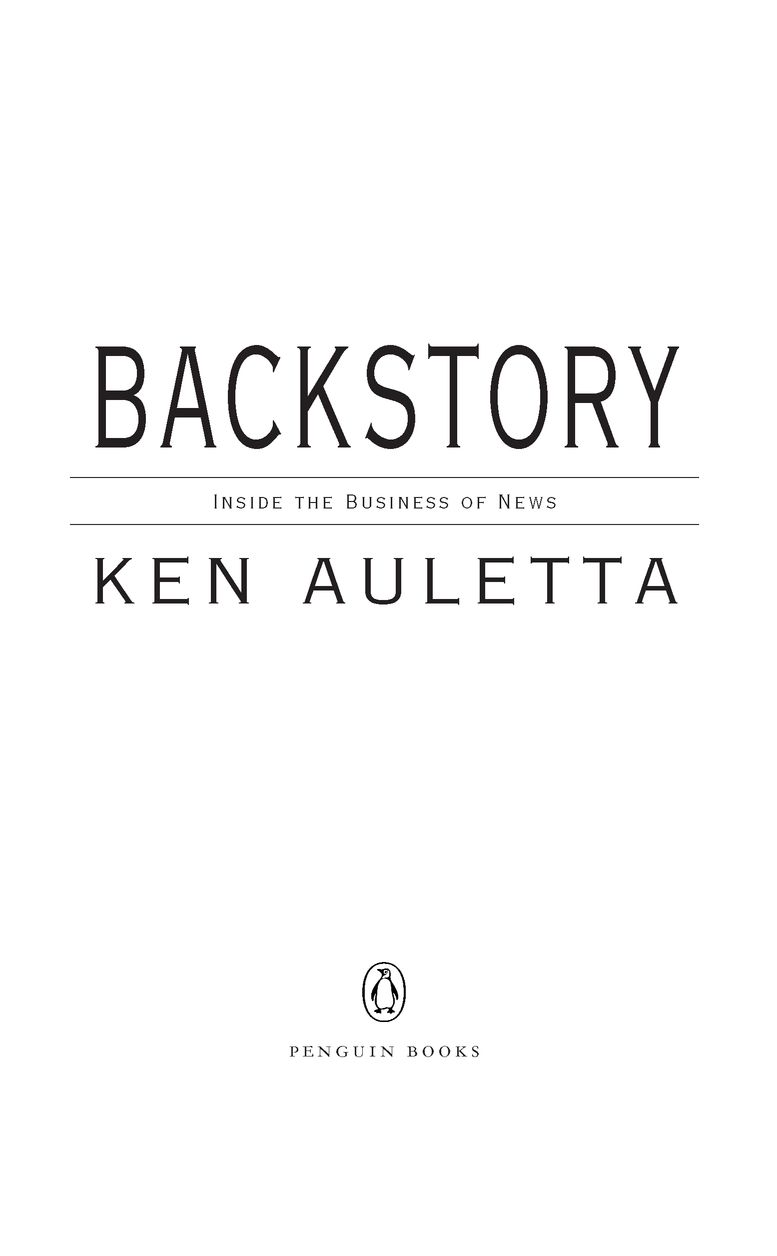Table of Contents
Praise forBackstory
Ken Auletta is the James Bond of the media world, a man who combines the probing mind and easy charm of a top intelligence agent with the glamour that befits the holder of a high-profile job.... The result: stories that give readers an intimate feel for the drama within the institutions that set the national news agenda.
Diane Brady, Business Week
Extra! Extra! Read all about it! From the hallowed halls of The New York Times to the demimonde of the tabloids, Ken Auletta gets the Backstory on the business of news.Fanfair, Vanity Fair
Absolutely riveting ... By any account Ken Auletta is a model journalist, illuminating key questions with his own good writing, hard work, and humility.
Robert Messenger, The New York Sun
Auletta, author and respected media critic ... offers cogent analyses of the internal and external pressures reshaping American journalism.
Vanessa Bush, Booklist (starred review)
For a deeper understanding of how the big American media works, for a solid forecast of the clouds threatening the state of journalism, theres nobody better than Auletta.Steve Bennett, San Antonio Express-News
If you want to know whats really happening in the rapidly changing worlds of newspaper and television journalism, this is the book to read.... Ken Auletta is the media critic for The New Yorker, and Backstory is a collection of his eye-opening pieces published in the magazine over the past decade.... What makes this collection so valuable is that Auletta takes a hard look at his profession and asks high-profile journalists the kind of tough questions they have asked of so many others.
Elizabeth Bennett, Pittsburgh Post-Gazette
Auletta has a deft way of describing journalists in their natural habitat.
John C. Ensslin, Rocky Mountain News
Brilliant, breathtaking reporting ... gripping.
Jennifer Prittie, National Post (Toronto)
Prescient.John Leonard, Har pers Magazine
Ken Auletta is one of the best reporters working today.... Throughout Backstory ... Auletta brilliantly illuminates the machinations of print, TV, and the Internet.... Nobody was on this story before Auletta, and nobody covers it with more authority, insight and compelling detail.
Patrick Beach, Austin American-Statesman
Telling.Russ Smith, The New York Press
Auletta provides a valuable perspective on how the pressures of business have affected how we read and watch the news.Publishers Weekly
Eye-opening for news consumers, and useful for journalists hoping to understand the changes sweeping the profession.Kirkus Reviews
ABOUT THE AUTHOR
Ken Auletta has written the Annals of Communication column and profiles for The New Yorker since 1992. He is the author of eight books, four of them national bestsellers, including Three Blind Mice, Greed and Glory on Wall Street, and World War 3.0. In naming him Americas premier media critic, the Columbia Journalism Review said that no other reporter has covered the new communications revolution as thoroughly as Auletta. He lives in Manhattan with his wife and daughter.
For Abe Lass, a high school principal who helped save lives, including mine.
INTRODUCTION
I WAS FIRST INFECTED with the idea of becoming a journalist while studying political science in graduate school. The bylines I remember belonged to Murray Kempton, David Halberstam, Homer Bigart, Gay Talese, I. F. Stone, Lillian Ross, among others. Why not, I thought, extend school through my life and get paid to learn, travel, and meet people? Journalism also held some allure as a profession where independence was prized. Didnt reporters brave Bull Connors dogs to report on the struggle for civil rights? Didnt the New York Times face down President Kennedy when he wanted Halberstam yanked from Vietnam? Didnt the Washington Post back two cub reporters over an incident known as Watergate? I saw how Lillian Rossand then years later, Gay Talese, Norman Mailer, and Tom Wolfeperfected something called the New Journalism, a way to marry narrative fiction techniques to nonfiction. This was a profession that could educate and entertain. It could inspire change. True, it conferred power without responsibility, and thus was a wonderful way to prolong adolescence. But it was also a noble calling, a vital public service in a democracy where citizens rely on information to vote and to form and freely express opinions.
Im still a sucker for the romance of journalism, but Im also a realist. My adult lifetime graduate course has taught me that my mtiers virtues, like those of the Greek heroes, often become its vices. Its very successesilluminating the civil rights revolution, helping open Americas eyes to Vietnam or Nixons depredations or financial mismanagementinduced excess. Reporters wanted to be famous, rich, influential. As a media writer, Ive reported on a new generation of windbags, of callow people who think they become investigative reporters by adopting a belligerent pose without doing the hard digging, of bloviators so infatuated with their own voice they have forgotten how to listen, of news presidents who are slaves to ratings, and of editors terrified they may bore readers. As in any profession, some folks take shortcuts.
The shortcut I worry most about today falls under the rubric of business pressures. I worry about the owners of journalistic properties making business decisions that harm journalism. Recall the oft-told story of the wasp with a crippled wing that pleads with a frog to carry him across a pond. After promising not to sting him, the wasp finally induces the frog to lug him across. Arriving on the other shore, alas, the wasp stings him. As the frog is expiring he plaintively asks, Whyd you sting me?
What can I tell you? Im a wasp. Its my nature.
As a reporter, Ive learned its the nature of corporate executives to extol the virtues of synergy, profit margins, the stock price, cost cutting, extending the brand, demographics, ratings, and getting on the team. Journalists rarely share these concerns, so we often denounce what we see as dumb corporate decisions that do violence to journalism. We would do better to recognize that this is the nature of the business culture and figure out how to translate our journalistic concerns into language corporate executives can understand. Since they write the checks, somehow journalists must persuade our corporate chiefs to broaden their too narrow definition of success.
This wont be easy. The cultural divide between us is vast. The corporate buzzword synergy is rarely journalisms friend. The business assumptions that animate synergycost savings, team culture, leverage of sizeare often a menace to journalism. Take, for example, the proposed merger of CNN and ABC News that surfaced in the latter half of 2002. The key argument for consolidating CNN with a network news division was that upward of $200 million in cost reductions could be realized. This synergy would sweeten the bottom line and maybe provide CNN with the use of more visible ABC stars, but its hard to see how it would improve news coverage. ABC would have access to CNNs more extensive bureaus overseas, but ABC, except in national emergencies, has continued to shrink international news. Early in 2002, ABC tried to replace its luminous internationalist newscastTed Koppels



